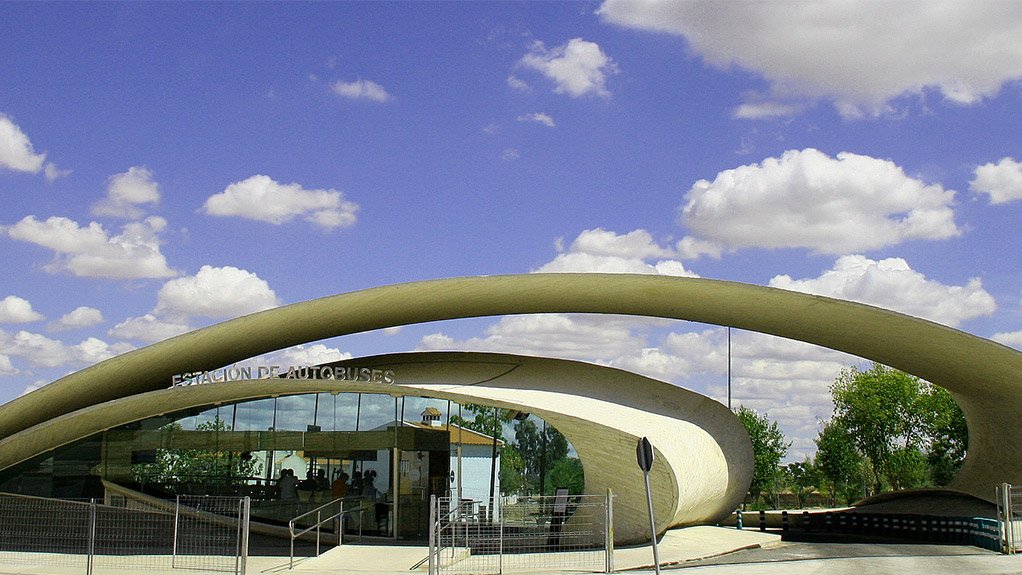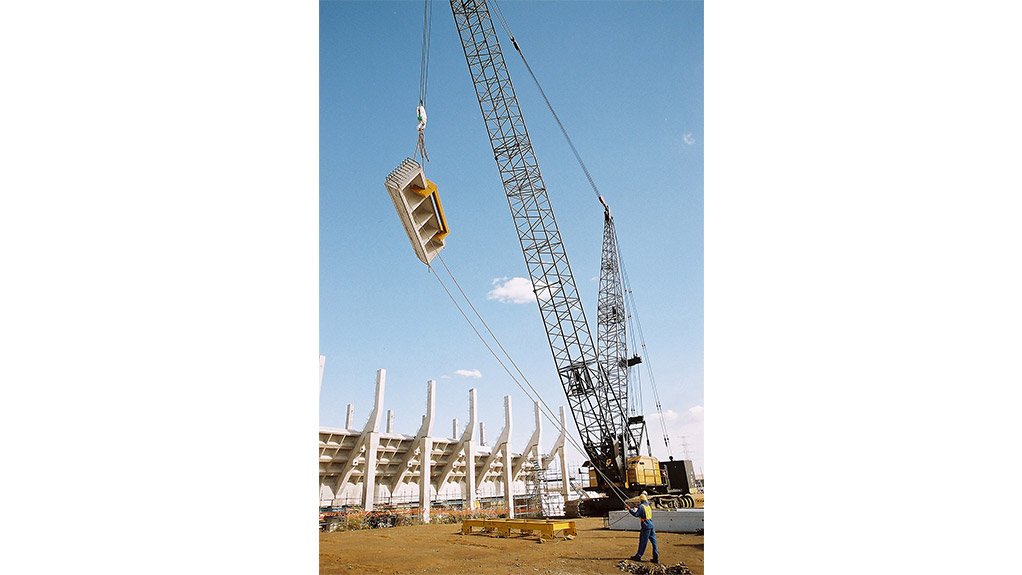Concrete Offers Unmatched Structural Integrity, Says TCI
This article has been supplied as a media statement and is not written by Creamer Media. It may be available only for a limited time on this website.
Structural integrity, durability, energy efficiency and fire resistance are just a few of the benefits concrete construction offers for the creation of infrastructure, says Bryan Perrie, MD of The Concrete Institute (TCI).
Perrie says the strength of concrete elements in buildings is well understood by structural engineers, architects and contractors. This includes in-situ reinforced concrete, precast concrete, tilt-up, hybrid construction, and post-tensioned concrete elements.
“South African design and construction codes regulate the structural requirements of concrete buildings which ensure that concrete structures are safe, with the capacity to cope with any permanent, imposed, wind and earthquake actions. For common spans, the relatively high mass of concrete floors leads to natural damping and low vibration. For more stringent criteria, such as for laboratories or hospital operating theatres, the additional cost to meet stricter vibration criteria is negligible,” Perrie states.
Concrete is renowned as one of the most durable materials on earth so well-designed, well-constructed concrete ensures long life in any structure. This results not only in lower expenditure of energy in building new infrastructure or housing but also in reduced maintenance and impact on the use of finite resources.
“The first line of defence against deterioration is good quality, impermeable concrete. In the case of reinforced concrete, the quality of the cover concrete is extremely important in protecting the steel reinforcement against aggressive agents and fire. This zone of concrete is intended to act as the barrier between the reinforcing steel and external aggressive environments and its quality is of primary importance in durability considerations. Good material choice, mix proportioning, and sound construction practice are essential to ensure durable concrete,” Perrie emphasises.
Ensuring concrete integrity and durability is essential to utilise the equity already in the existing structure and not to have to re-invest in materials and energy prematurely.
Concrete’s energy efficiency is shown in many ways. The use of local materials in production of concrete minimises fuel costs for handling and transportation and, once in place, concrete offers significant energy savings over the lifetime of the structure.
Most of the primary materials used in concrete are produced locally. Cement extenders and slag aggregates used are secondary industrial products that would otherwise have required dumping. While the cement factories are generally located close to the location of the necessary raw materials, sources of aggregates and ready-mix plants can be placed close to the areas of demand thereby reducing the energy required for transport.
“The materials used in concrete furthermore make efficient use of natural resources and again the potential for recycling at life-end saves quarrying of finite resources. Concrete mixes for ready-mix plants and precast yards are designed specifically to use aggregates sourced from local quarries - and more recently also from recycled concrete - which reduces fuel costs for transporting these materials.
“The embodied energy in the construction of a structure is usually minimal compared with the energy likely to be consumed during the life or use phase of a structure. In the case of roads and transport infrastructure, any aspect reducing fuel consumption will have a major impact on the energy usage over the lifetime of a busy highway. A major Canadian study showed a 2.35% fuel saving by using concrete roads, with a subsequent reduction in the emission of polluting gases.”
Perrie says another benefit of concrete structures is that concrete does not burn or emit any toxic substances during a fire. It will not produce smoke or drip molten particles and therefore concrete can be described as ‘fire resistant’. The concrete in structures, unlike in other construction materials, generally does not require fire-proofing or protection if appropriately designed. “The eliminates the time, cost, additional materials and labour required to provide separate fire protection measures. During a fire, the concrete cover will protect the steel reinforcement from buckling or yielding.”
Concrete’s inherent fire resistance will restrict smoke from spreading and will largely maintain a building’s strength during a fire. After a fire, the continuing structural strength and reduction in smoke damage also reduce the magnitude of insurance claims. Concrete structures generally remain intact after a blaze, allowing for relatively quick repair and re-occupation, saving time and costs as well as finite resources.
“Fire-damaged concrete buildings usually do not require demolishing or rebuilding so concrete structures protect life and preserve property, contributing to enhanced social and economic performance of the built environment – an important consideration for all property owners such as municipalities.
“When aesthetic qualities such as design flexibility and variety of finishes are added to the sustainability benefits of concrete, it is easy to see why it is the preferred choice of building material for property owners, developers, designers and contractors,” Perrie adds.
Comments
Announcements
What's On
Subscribe to improve your user experience...
Option 1 (equivalent of R125 a month):
Receive a weekly copy of Creamer Media's Engineering News & Mining Weekly magazine
(print copy for those in South Africa and e-magazine for those outside of South Africa)
Receive daily email newsletters
Access to full search results
Access archive of magazine back copies
Access to Projects in Progress
Access to ONE Research Report of your choice in PDF format
Option 2 (equivalent of R375 a month):
All benefits from Option 1
PLUS
Access to Creamer Media's Research Channel Africa for ALL Research Reports, in PDF format, on various industrial and mining sectors
including Electricity; Water; Energy Transition; Hydrogen; Roads, Rail and Ports; Coal; Gold; Platinum; Battery Metals; etc.
Already a subscriber?
Forgotten your password?
Receive weekly copy of Creamer Media's Engineering News & Mining Weekly magazine (print copy for those in South Africa and e-magazine for those outside of South Africa)
➕
Recieve daily email newsletters
➕
Access to full search results
➕
Access archive of magazine back copies
➕
Access to Projects in Progress
➕
Access to ONE Research Report of your choice in PDF format
RESEARCH CHANNEL AFRICA
R4500 (equivalent of R375 a month)
SUBSCRIBEAll benefits from Option 1
➕
Access to Creamer Media's Research Channel Africa for ALL Research Reports on various industrial and mining sectors, in PDF format, including on:
Electricity
➕
Water
➕
Energy Transition
➕
Hydrogen
➕
Roads, Rail and Ports
➕
Coal
➕
Gold
➕
Platinum
➕
Battery Metals
➕
etc.
Receive all benefits from Option 1 or Option 2 delivered to numerous people at your company
➕
Multiple User names and Passwords for simultaneous log-ins
➕
Intranet integration access to all in your organisation



























